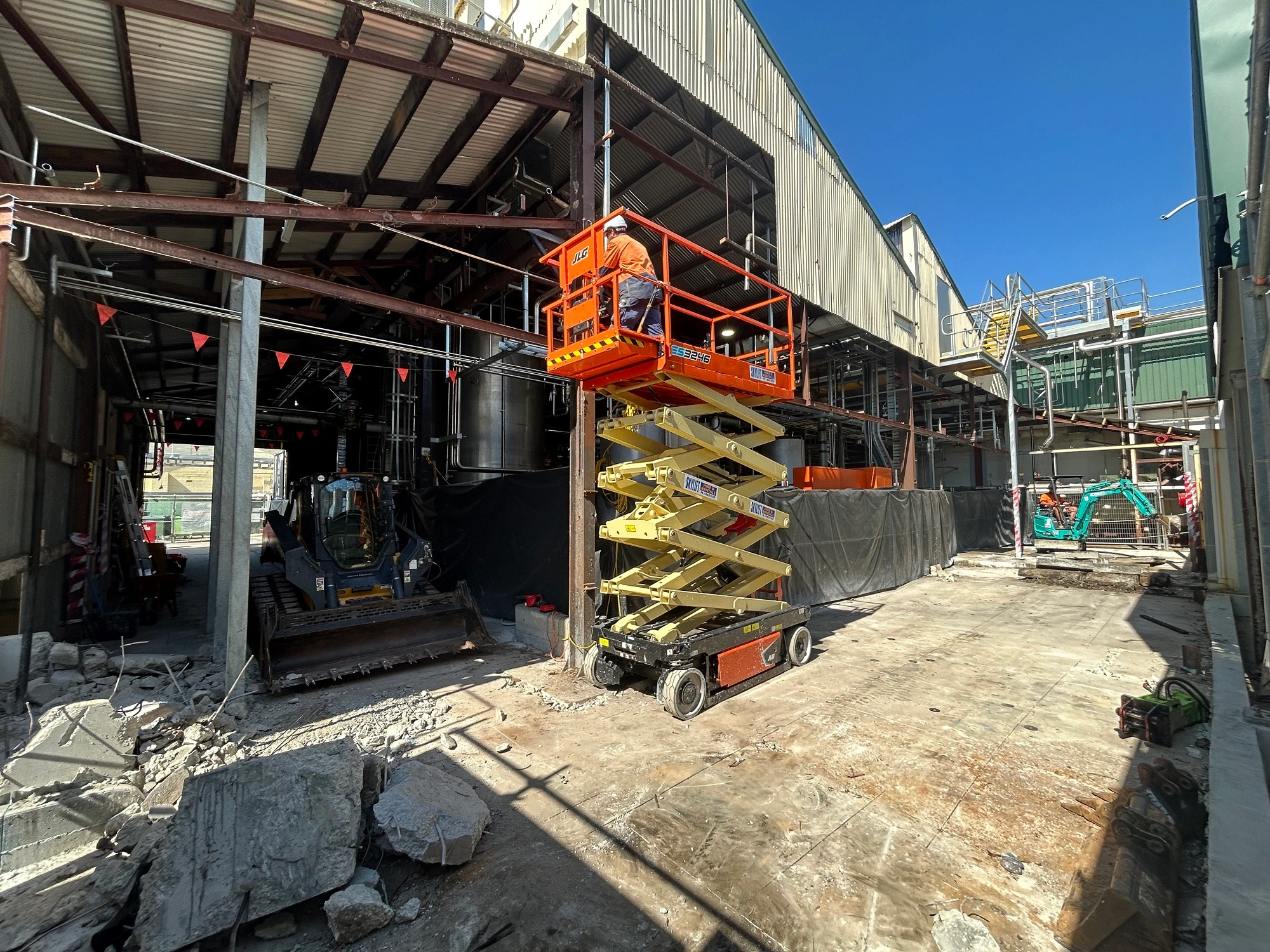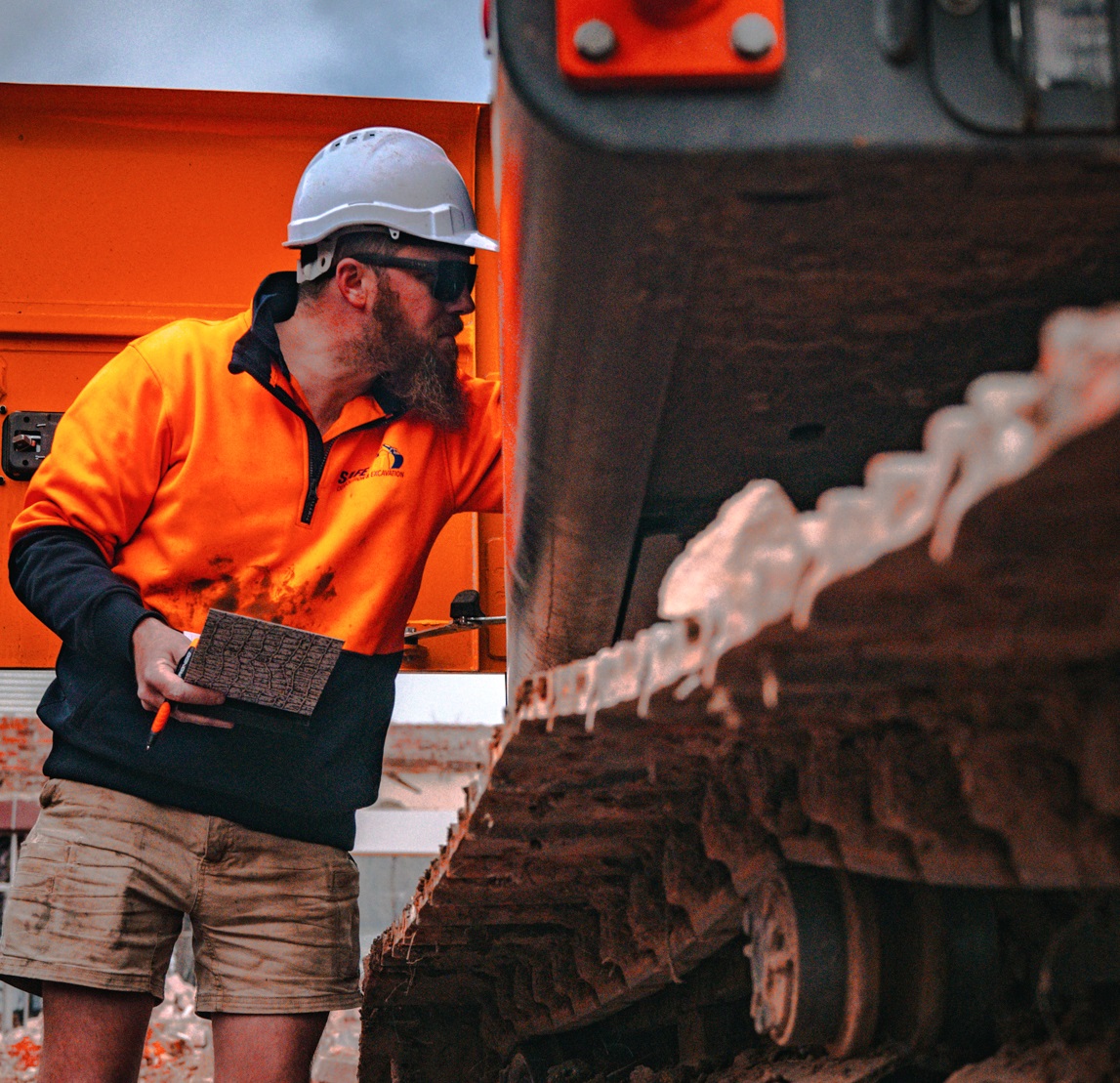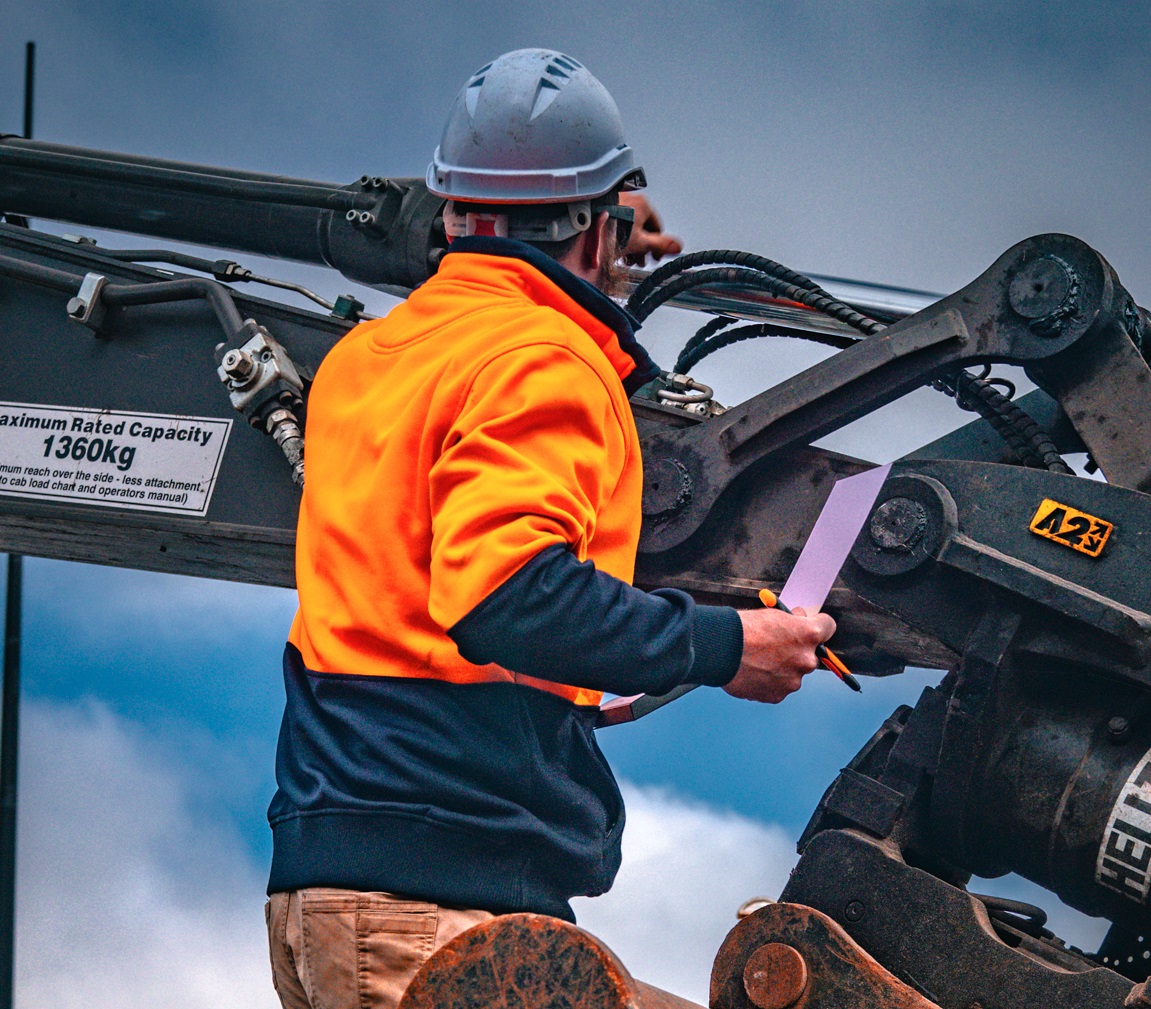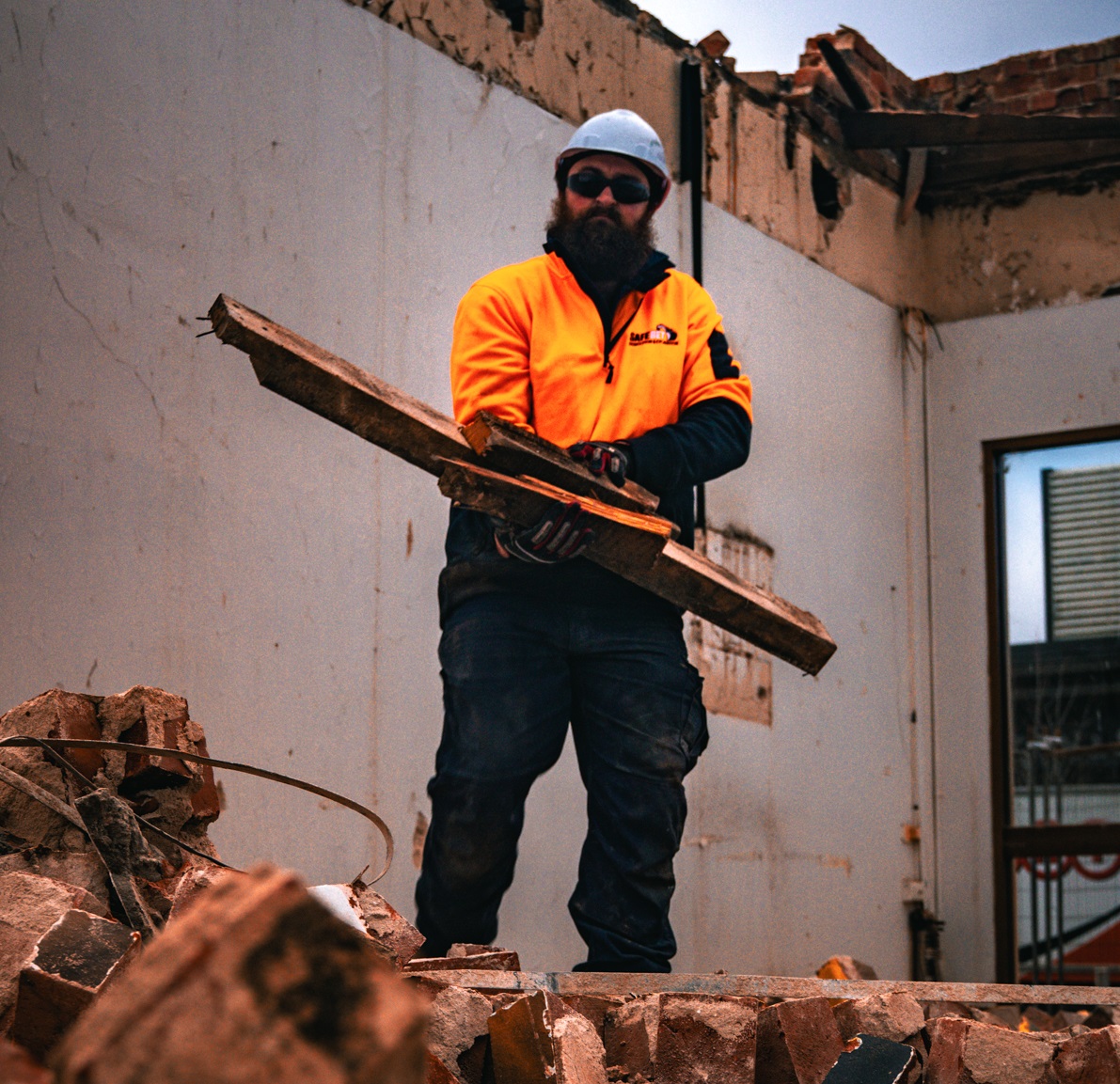At a glance
- Explore various methods of demolition, from manual to induced collapse and explosives.
- Factors influencing demolition method choice: structure type, location, size, materials, and more.
- Demolition in Australia: Navigate permits, hazardous materials, utilities, and environmental considerations.
Demolition plays a crucial role within the construction sector, acting as the foundational step that ensures existing structures are removed safely and efficiently to clear the path for fresh developments.
This process applies to both residential homes and commercial properties alike. Importantly, each project demands meticulous planning and thoughtful consideration of numerous factors to identify the most appropriate demolition technique.
Through this detailed guide, we aim to delve into the array of demolition methods utilised across Australia.
Additionally, we will examine the various elements that influence the selection of a specific method for both home and commercial demolition endeavours.
Understanding Different Methods of Demolition
Commercial demolition, especially in densely populated areas like VIC and NSW, often requires meticulous planning and consideration.
Manual Demolition
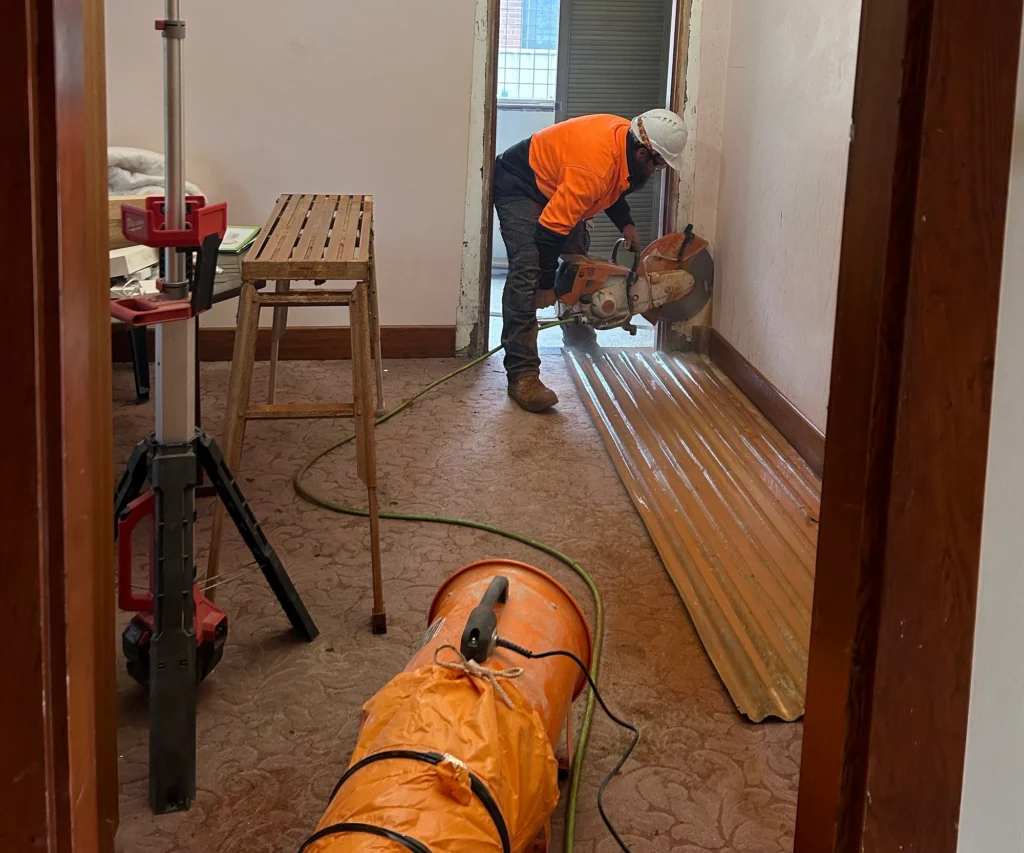
Manual demolition involves systematically dismantling a building piece by piece, using hand-held tools such as jackhammers, sledgehammers, and picks.
This method is labour-intensive and time-consuming but offers the advantage of allowing for the recycling and reuse of building materials for future projects.
It is commonly used for smaller structures such as slabs or walls.
When opting for manual demolition, developing a Safe Work Method Statement (SWMS) to outline the hazards involved and the control measures to be implemented is crucial.
Assessing the condition of the building’s roofs, walls, and floors is essential to prevent unexpected collapses.
Additionally, fencing off the areas of influence and seeking professional advice and assistance when needed to ensure the safety of the demolition process.
Mechanical Demolition
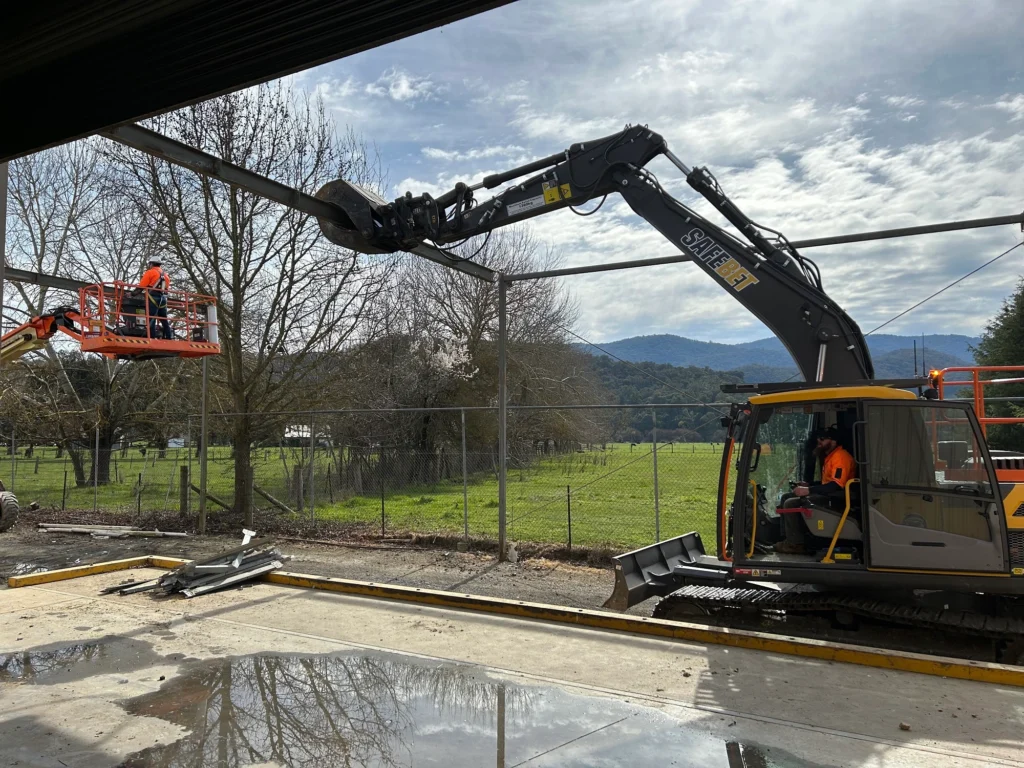
Mechanical demolition involves the use of heavy machinery, including excavators, cranes, and bulldozers, to pull or push the building down.
This method is quicker and requires fewer workers but carries the risk of falls from elevated work platforms and crush injuries.
It is typically used for larger structures that require more power to demolish.
Induced Collapse
Induced collapse is a controlled method of demolition that involves systematically removing key structural members before applying the necessary force to bring down the building.
This method should only be used on detached structures on reasonably level sites, ensuring there is sufficient space for the collapsing structure to fall without causing harm to personnel or nearby structures.
Wire ropes, slings, and chains are commonly used to demolish the structure in an induced collapse.
Using Explosives
Building implosion, also known as explosive demolition, is a method that involves the controlled use of explosives to bring down a structure.
This method requires the expertise of competent specialists to ensure the structure collapses onto its own footprint, minimising damage to surrounding areas.
Building implosion is commonly used for large structures in heavily populated areas.
Factors Affecting the Choice of Demolition Method
Location plays a significant role in the choice of demolition method, especially for commercial demolition projects in VIC and NSW.
Additionally, Several factors should be taken into consideration when deciding on the most suitable method of demolition for a project.
These factors can impact the cost, timeline, and safety of the demolition process.
Type of Structure
The type of structure being demolished is a critical factor in determining the most appropriate demolition method.
Different structures require different techniques, and the choice of method can affect the overall project’s efficiency and safety.
Whether it is a residential property or a commercial building, understanding the specific requirements of the structure is essential.
Location
The location of the structure also plays a significant role in the choice of demolition method.
Factors such as accessibility, proximity to neighbouring properties, and terrain type can impact the demolition process.
Demolition in urban areas may require more careful planning and consideration to minimise disruption to the surrounding environment.
Size of the Structure
The size of the structure being demolished can influence the choice of method and the resources required for the demolition process.
Larger structures may require more time, equipment, and human resources to complete the demolition, which can impact the overall project’s cost and timeline.
Scope of Demolition Project
Not all demolition projects involve the total removal of the building.
In some cases, an internal strip-out is performed to prepare the building interior for renovation or restoration while preserving its core structure.
The scope of the demolition project, whether it is a complete demolition or an internal strip-out, can affect the overall cost and duration of the project.
Materials
The materials used in the construction of the structure can impact the demolition process.
Different materials require different demolition methods and techniques.
Some materials, such as asbestos, may require specialised handling and disposal procedures, adding complexity and cost to the demolition project.
It is essential to consider the materials present in the structure and develop appropriate strategies for their removal and disposal.
Environmental Factors
Environmental factors, including weather conditions, noise restrictions, and air quality regulations, can impact the demolition project.
These factors must be taken into account during the planning phase to ensure that the demolition is carried out safely and in compliance with all applicable regulations.
Adhering to environmental regulations not only ensures the safety of the demolition process but also protects the surrounding environment and community.
Hazardous Materials
The presence of hazardous materials in the building or structure can significantly impact the demolition process.
Materials such as asbestos, lead, and mould require specialised handling and removal procedures to ensure the safety of workers and the environment.
As mandated by local Australian laws, it is essential to engage licensed professionals from reputable demolition companies when dealing with hazardous materials.
The presence of hazardous materials can increase the overall cost and complexity of the demolition project.
Utilities
The presence of utilities, including gas, water, and electricity, can affect the demolition process.
These utilities must be safely disconnected before the demolition can proceed, which may require coordination with utility providers and additional time and resources.
Permitting
Obtaining the necessary permits for the demolition project is crucial and should not be overlooked.
The permitting process can be time-consuming and complex, with requirements varying depending on the location and type of structure being demolished.
Failure to obtain the required permits can result in fines and other legal consequences.
It is essential to work with experienced demolition contractors who can navigate the permitting process and ensure compliance with all applicable regulations.
Demolition projects require careful planning and consideration of various factors to ensure a safe and efficient process.
Understanding the different methods of demolition and the factors that can affect the choice of method is essential for successful project execution.
By considering the type of structure, location, size, scope, materials, environmental factors, hazardous materials, utilities, and permitting requirements, demolition projects can be carried out effectively, minimising risks and maximising results.
Engaging experienced demolition companies with a strong track record in delivering successful projects is crucial to achieving the desired outcomes.
With proper planning and execution, demolition projects can pave the way for new developments and contribute to the growth and progress of communities in Australia.
